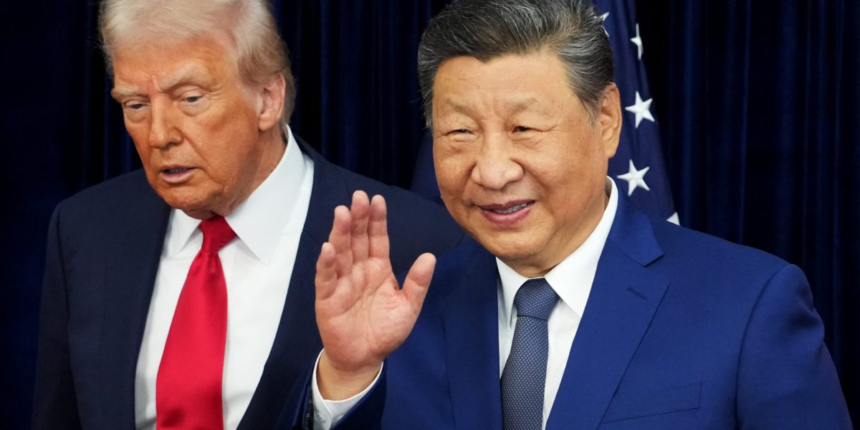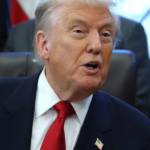While President Trump’s unorthodox deal making style has intentionally resembled a “bull in a china shop,” it was more like a placid cow in a field last week in China. The world collectively took a deep breath following the U.S.-China Summit, as neither Trump nor Chinese President Xi Jinping escalated the ongoing trade war between the two nations. However, among global leaders, business chief executives, and everyday consumers, many questions remain. Yesterday I asked 35 sophisticated Chinese CEOs if the Summit was a “12” on a grading scale of one to 10. Perhaps unsurprisingly, only two agreed. As the summit has been examined from nearly every possible angle, two primary narratives have emerged.
Both are correct. But the meeting was far more consequential than these two viewpoints permit—and not just because the U.S. 100% tariff threat or Chinese rare earths export control were averted. The key fact is that the Trump-Xi Summit revealed the limits of Trump’s tariff war and exposed that a long-term solution is nowhere on the horizon.
Trump, famous for his bullying tactics, knows well that there is only one practical answer to a bully: collective action. As the Trump administration often contends, the U.S. holds significant influence in global trade as the largest consumer. Yet, what often goes unsaid is that the world is more dependent on Chinese goods than it is on the American consumer. With this leverage, Xi has bullied countries into accepting China’s subsidized products, pressed businesses to relinquish intellectual property, and pushed unwanted foreign competitors out.
While Trump is among the best at combating collective action, he has proven less capable at building it. His tariff tirade has made it impossible for him to build a strong consensus in response to China’s predatory trade machinations. So, who’s the bully and who’s getting bullied?
Trump has abused the potency of tariffs for the purported promotion of economic security by using them as a weapon to settle personal scores or take advantage of weaker nations.
The exploitation of tariffs does little to persuade potential international partners to endure economic hardship in opposition to China’s market maneuvers. Paired with a mercurial president, the risk of being abandoned by a self-interested ally now appears greater than the threat of dependence on a country with which they are not currently engaged in a bizarre trade war. In fact, roughly 60% denied that their capital investments into domestic manufacturing/infrastructure will ever be stimulated, in the short term or long term, due to President Trump’s tariff policies with 71% seeing the tariffs as harmful.
The uncertainty caused by tariffs has slowed economic growth and punished the industrial base of longstanding U.S. partners and allies, making them more vulnerable to would-be Chinese coercion. Unfortunately, those who had hoped for more certainty after the summit were left wanting.
U.S. port fees on China’s maritime, logistics, and shipbuilding industries were also temporarily lifted, despite the initial idea that those charges were to be part of a broader strategy to revitalize the U.S. shipbuilding industry.
AEI’s Derek Scissor was partly right. The U.S. has returned to its pre-Trump administration state. Although, it is far more expensive to manufacture goods at home and abroad, and the economic affairs of foreign partners are significantly weaker today than they were in January.
The Trump tariffs have given Xi opportunities to publicly emphasize new areas of power balance between China and the U.S. through retaliatory actions. The whispers of China’s rise have been ongoing since the Obama administration, but the power that was unintentionally ceded due to the actions taken by the first and second Trump administrations cannot be overlooked.
The Trump-Xi Summit ultimately revealed a fundamental flaw in the administration’s strategy: Trump has started a trade war that the U.S. cannot win alone. Tackling China’s market manipulations requires the collective action that Trump has systematically undermined through his indiscriminate use of tariffs. Paradoxically, the market distortions that the tariff “stick” most aspires to eliminate in China—the subsidies, intellectual property theft, and forced technology transfers that are the most justified targets—are the least likely to be remedied due to the collateral damage inflicted on America’s allies through Trump’s protectionism. Without carrots to complement the stick, the U.S. risks becoming isolated as its leverage diminishes. The problem is, when you overuse a stick, it tends to break—even if it is an American stick.
The opinions expressed in Fortune.com commentary pieces are solely the views of their authors and do not necessarily reflect the opinions and beliefs of Fortune.









